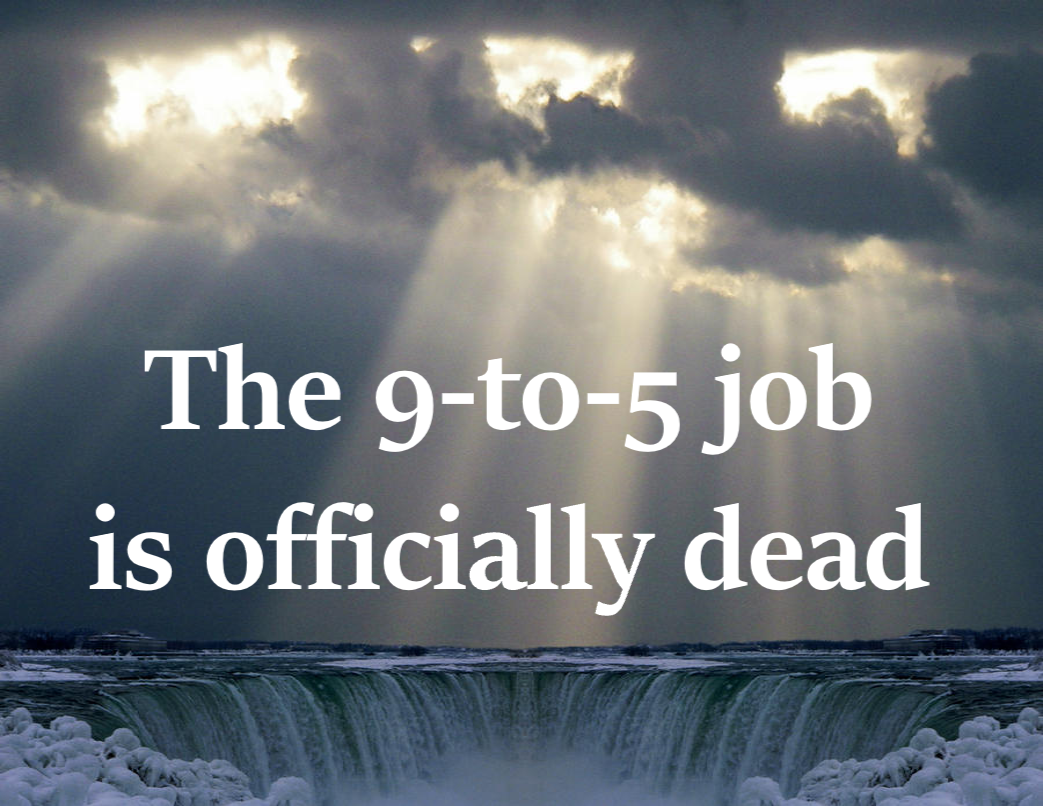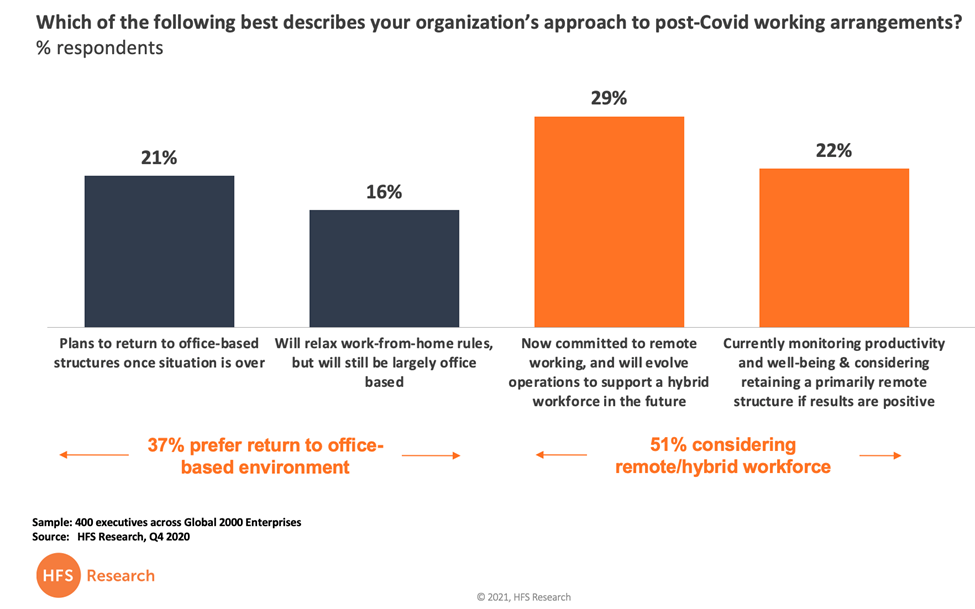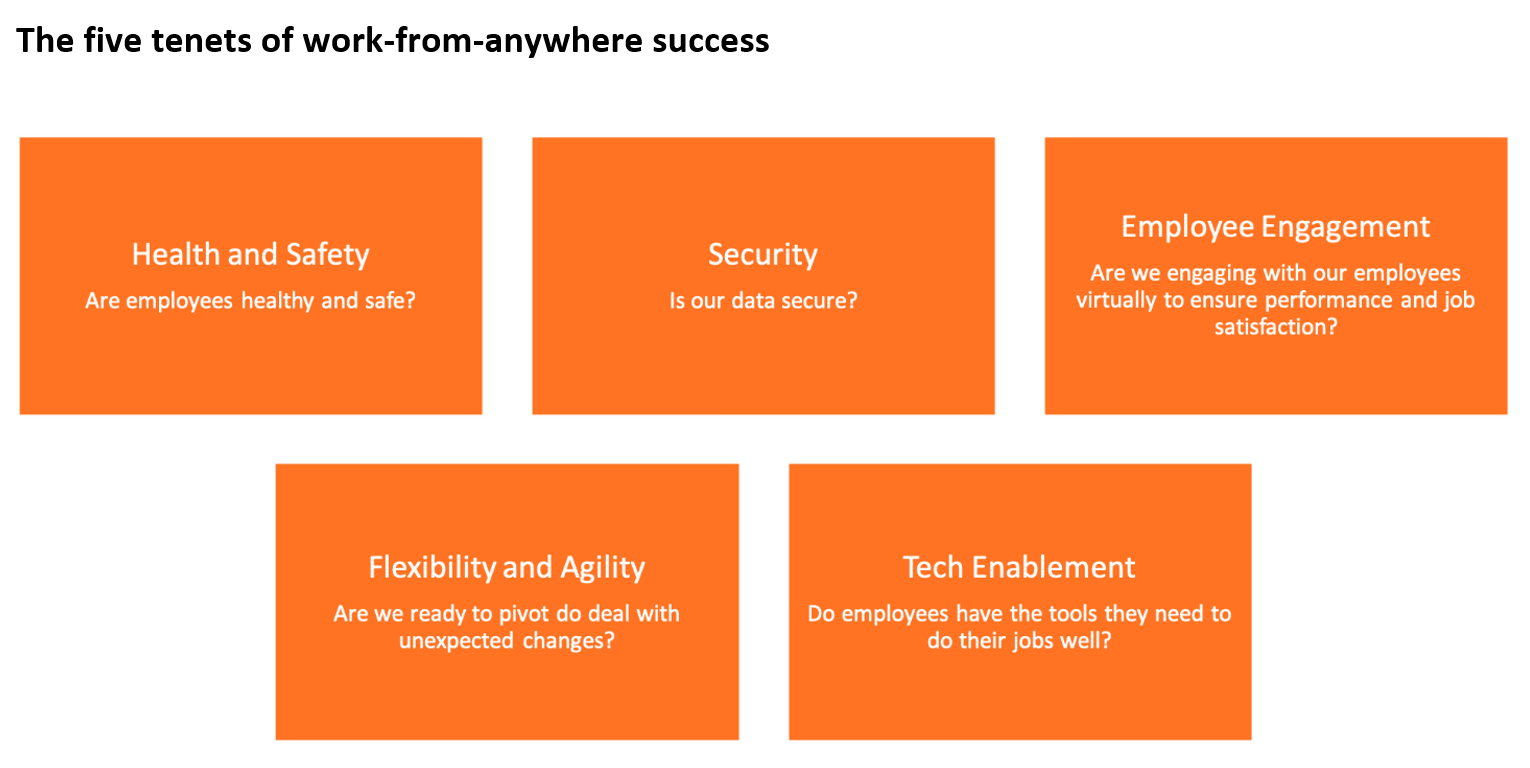
With companies the size and stature of Aetna, Amazon, Nationwide Insurance, Microsoft, and Unilever committing to the hybrid work model well beyond Covid-19, where home working is encouraged, you know a seismic shift to the corporate work culture is firmly underway. Simply put, most firms are enjoying the lesser reliance on expensive corporate real estate, combined with the novel environment to design and automate processes in a cloud model – because there is simply no choice but to embrace digital head-on if they are to survive.
The true benefits of digital are all about scaling your business at a speed and cost-efficiency that keeps you ahead of your customers’ needs. It’s all been about breaking the cycle where you had to keep adding people to ensure growth – for today and tomorrow, it’s about doing more business from the same (or less) resources.
OneOffice is the mindset to put real digital transformation into action, and there has never been a burning platform like the Work-From-Anywhere (WFA) revolution to force this change
Some of the world’s largest enterprises still have up to 100% staff working from home and have managed as a remote workforce for a year now. A recent HFS study of 400 Global 2000 enterprises reveals that barely more than a third of enterprises intend to return to an office-based corporate model:
Office-based environments will never return to pre-COVID levels: We will have a significant Work-from-Anywhere workforce
It is very unlikely that most enterprises will return to full-time office work, and the ramifications are plentiful and we evolve into Work-from-Anywhere
This is a complicated puzzle to solve, especially for large enterprises with a wide breadth of business functions and roles. This essentially leaves us with four pivotal questions to answer:
- The 9-5 workday is dead, but what does the new workday (and workforce) actually look like?
- How can businesses prevent burnout while ensuring productivity at the same time?
- How can workers adapt their skillsets that will stand them in good stead in this emerging environment?
- And how do they ensure employee satisfaction while making the right decisions for security and business stability?
The new mentality is all about measuring outcomes from getting work done, as opposed to the inputs of resourcing for work
The nature of work is fundamentally changing, and if companies manage this shift effectively, it will change the work environment for the better for ambitious enterprises. What’s needed is a solid grasp on what the long-term pivot to a ‘work from anywhere’ means to businesses, and a plan to make the remote workforce a part of the Digital OneOffice mindset. Ideally, these changes switch the mentality to an outcomes-focused model where all that really matters is that work gets done and customers and employees are satisfied, regardless of where either is physically located.
The why, the what, and the how of Work From Anywhere in 2021… and beyond
The “why” of work from home was starkly apparent in March 2020, when employees were compelled to work from home en masse to mitigate the virus’s spread. Now, it’s a different story. Now we’ve learned that when you have the right process and tools, work from home actually works. In many cases, it works better than traditional office working models – if it’s done right. We have spent a lot of time talking to the top contact center services companies and their enterprise clients about how they managed the disruption and are sustaining the new remote model. If these guys can master the WFA transformation while delivering incredibly high-touch services (which are rife with security concerns and imbued with a significant social dynamic in physical workforce spaces) – and make them work really well – we all have some lessons to learn from these folks.
The very basics of WFA success – the ‘what’ – are the elements of employee setups that are required to keep the operation ticking: the five tenets of long-term work at home success (see below). Each of these elements — health and safety, security, employee engagement, flexibility and agility, and technology enablement need to be pillars of your work from home strategy, or it will fall flat, causing frustration at best and disaster at worst.
The last few months have taught most companies how to stabilize and operationalize a work from home model. But what’s next? Now we need to formalize this, optimize it, and most importantly, adapt how we do business to the new(ish) remote dynamic that clearly isn’t going away any time soon. Now, it’s time for enterprises to roll up their sleeves and learn the HOW – how to optimize for better performance, to drive business value, and to shift with the evolving needs of customers and employees. How can you make work from anywhere a catalyst that helps your firm in its journey and mindset toward OneOffice, where traditional business siloes are broken down, employee and customer experiences are tightly aligned, and what matters most is clearly articulated outcomes? Here are our top recommendations for strategizing on a long-term work from anywhere strategy.
Formalizing your Work From Anywhere operations as a strategic element of the OneOffice journey
- ‘Wellness’ has a deeper meaning in a remote environment. Understanding what wellness means in a virtual world is knowing that it’s much more than temperature checks and making sure people ‘show up’ for work. While we must first ensure that people are healthy and have the proper conditions to do their jobs, the dynamics of working remotely raise new and sometimes less tangible concerns. Mental health issues are strained in quarantine and lock-down circumstances. Zoom fatigue is real, where exhaustion levels plague productivity and staff are given little time to focus on executing work, away from the constant obsession with having video-meetings on every topic imaginable. You must have a formalized proactive outreach to ensure people have are ‘OK’ and if they aren’t, provide or recommend resources to help them deal with the trials they’re enduring. Some leading service providers have implemented biometric tools that can use things like keystroke patterns to detect if someone is getting fatigued. It sounds a bit Orwellian, but consider the relief of an exhausted worker who gets a pop-up notification suggesting it’s time to take a much-needed break. As with any new tech, it can seem scary until people see the benefit to their lives or jobs.
- You must formally track employee engagement in a remote model. Apart from general wellness, employee engagement and performance management is an entirely different beast in a remote environment. Take the contact center, for example; these are folks who are used to several team ‘huddles’ a day, regular one on one coaching, often from floor walking managers who are picking up on physical cues to sense the need for help, not to mention the socialization of breakrooms and camaraderie with colleagues. This has been one of the most disrupted of the enterprise functions, and flipping all this to a virtual model means setting up collaboration tools and workspaces that enable a semblance of this kind of engagement. Not everyone works well in this environment, especially those that thrive on a social element. You will need to re-evaluate what a successful talent profile looks like for remote work, as well as make considerations for talented staff you want to retain in a potential hybrid scenario (see #4). This is where your data and analytics must take a front and center role to better track not only performance management but also recruitment and hiring data, and employee satisfaction.
- Collab tools and environments won’t work without a culture of collaboration. So you’ve put the tools in place to enable collaboration, but will people want to? You need to have the kind of culture where people feel as though their voice is actually being heard and their input is considered; otherwise, they will not be incentivized to contribute. If people struggled with collaborating in person, this could be exacerbated in the sometimes awkward, stilted venues of Zoom chats and Teams meetings. People need the confidence to share ideas and know that they are valued. It is now even more critical for leaders to listen in order to motivate.
- Embrace flexibility and agility, as ‘normal’ continues to shift, and varying degrees of hybrid will ensue. Just as retailers have pivoted to find the right balance of options for the shopper that encompass both safe physical experiences and seamless e-commerce based on consumer preference, companies must also adopt a flexible mentality to cater to employee expectations. Salesforce’s recent announcement offering ‘flex’ plans for employees to decide what makes sense for their work and risk situation is an example of this. Also, as you roll out hybrid programs, be prepared for the impacts of fluctuating pandemic conditions and local government regulations, which may suddenly shift everything fully remote once again.
- Design virtual employee journeys from start to finish. We are entering a new world where there is a potential that a person could be educated, graduated, recruited, hired, trained, promoted, etc., COMPLETELY virtually. Employers must think about which elements of these steps are fundamentally different for remote and what elements of the employee journey you can replicate online. Top service providers have shared effective strategies including employee persona development and journey mapping (just as we do with customers), virtual recruitment lobbies and job fairs, and virtual break rooms where people can unwind and chat (sans pool table, of course, though some have created gaming rooms where employees can challenge their colleagues to a lively round of Jeopardy). Some of these elements are practical – the typical skills assessment, as having always been administered, is now accompanied by device qualification and ISP bandwidth testing to ensure suitability for WFH requirements.
- Automation and self-service should be embedded in the employee journey. Just as we expect intelligent virtual assistance and seamless password resets in our consumer lives, we expect similar experiences with their employers. We have seen some fantastic examples of digital associates assisting with recruiting and onboarding new staff. Also, think of the disruption to IT service desks over the last year – automation and self-service can help to make those interactions seamless. Moreover, when employees don’t have easy access to these tools, their direct supervisor often becomes the default IT helpdesk. This is obviously not aligned to the manager’s skill set but also takes away from the precious time of coaching and development of employees. Speaking of coaching and development, we’ve even seen digital assistants being used to help trainees practice the skills required before leveling up to practice with supervisors and finally go live with customers. These tools must be designed to help kill mundane work to make workers more effective and to augment and support the employee experience.
- Now is the time to really dig in and consider diversification of the workforce. This is one of the shiniest examples of a silver lining that the massive disruption of a global pandemic has resulted in. Now that work from home is normalized, companies can stop paying lip service to diversity and really rethink their diversity strategies to start recruiting from pools of labor that were disenfranchised in a brick-and-mortar environment; think the differently-abled or working moms, for example. Not to mention the potential for penetrating untapped labor markets without the need for giant investments, including onshore destinations, which can help with often longed for localized resources. Diversity should be an essential component of doing business in 2021 and beyond.
- Last, but perhaps most crucial: drive performance through the lens of humanity. I was struck by a recent quote from Howard Schultz, which described the culture of Starbucks as “performance-based through the lens of humanity.” Businesses need to perform financially to survive and thrive, but as leaders, it is also important to take a step back and consider if our decisions are aligned to more holistic principles, including impact on our people, their local communities, and our global society. We have learned more about humanity than we ever expected in the last year, and our personal lives bleed into our work and vice versa like never before. We’ve learned to see each other in a more human light. Not just as colleagues, mentors, or resources, but as parents, caretakers, siblings, citizens – as people. While we are physically remote, we cannot settle for a remote culture where we keep each other at arm’s length; remote working in the long term requires constant communication and transparency to ensure that employees know the company’s values and their role in influencing and delivering on them.
The bottom line: work-from-anywhere has become part of the fabric of company operations rather than an afterthought and a reaction to a crisis
This is true beginning of the OneOffice, five years since we introduced this mindset to our industry. Now we must make remote working an agile and future-proof business model where talent is embraced and given the freedom to develop, outside of the confines of cube-farms and rigid 9.00-5.00 work structures.
Posted in : Contact Center and Omni-Channel, OneOffice, Talent and Workforce







